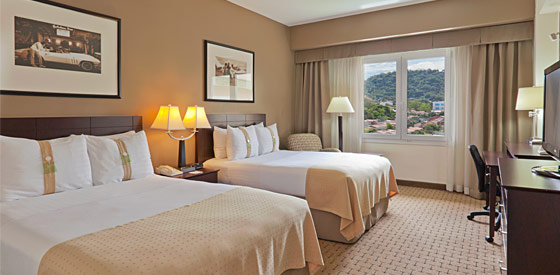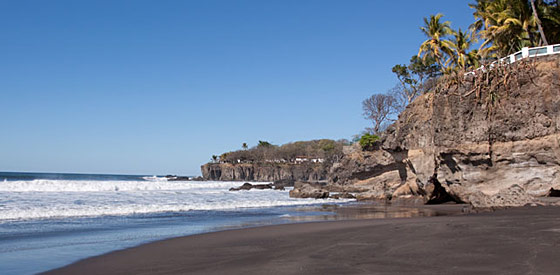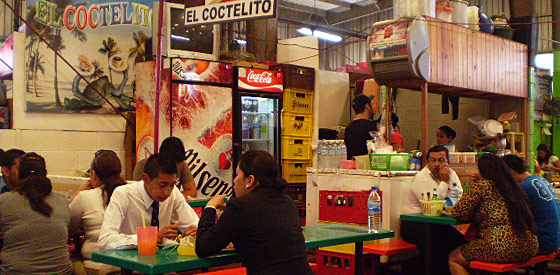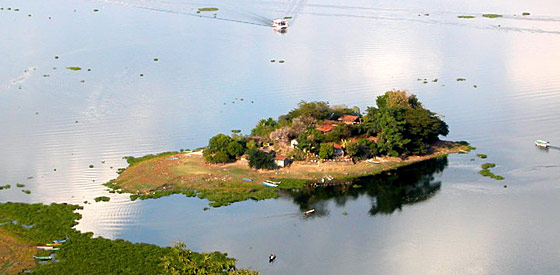1. Where to Stay

Book a room in one of the city’s surprisingly affordable five-star properties. The resortlike Sheraton Presidente (from $169), located in nightlife-centric Zona Rosa, is where President Obama and other heads of state prefer to sleep. Alternatively, opt for the Real InterContinental (from $129), which is close to a handful of the city’s best restaurants and the three-story Metrocenter, the largest mall in Central America.
Choose from one of six daily breakfast options at the nine-room Villa del Angel (from $56), a fashionable B&B opened last August by a young local couple. The pair designed all of the locally produced furniture in each room, and the hotel’s Colonia Escalon address puts it close to high-end shops and indie boutiques.
Stay at the most recently renovated of San Salvador’s upscale hotels at the four-star Holiday Inn (from $129), located in the quiet, leafy Antiguo Cuscatlan district near the U.S. Embassy. Skip the merely decent in-house restaurant, Essenza, for a taste of the justifiably famous grilled chicken at Pollo Campero in the mall next door.
2. Where to Eat

Trade your shorts for slacks at Alo Nuestro (Calle La Reforma 225; 503-2223-5116), the decade-old institution widely considered to be the best table in town. The menu offers refined takes on local regional cuisine with dishes like tilapia in pepper sauce and handmade tamales ($17–$25). Reserve a few days in advance to snag a table on the outdoor terrace, which offers sought-after views of the city.
Taste Salvadoreans’ favorite street food at Abbi Pupuseria, a crowded hilltop eatery whose sprawling, open-air dining room overlooks the city center. The pupusas ($1–$3) are made from maize or rice, filled with chicken, soft cheese, fried pork, or refried beans, and topped with the piquant curtido, the local cabbage relish. Finish with a traditional sorbet at El Sin Rival, a mini-chain that started out as a street cart in 1953 and serves all-natural flavors like maranon (cashew), mango, and nance, a sweet local fruit.
Drink with local intellectuals at La Ventana, a casual restaurant and tavern decorated with work by local artists. Writers, musicians, and expats come here for the international menu of crêpes, pizzas, tacos, and Hungarian goulash ($7–$12); be sure to tap into the unique selection of beers from Germany and Belgium, including Köstritzer ($4) and Licher Weizen ($6), a clear wheat brew.
3. What to Do

Catch serious waves on the rugged Pacific coastline near the beach town of La Libertad, a 45-minute drive from the city. Rent a board from Punta Roca Rockets ($75 per week) in the heart of town and then join surf enthusiasts from around the world at the two main beaches. El Tucal, laden with massive rock formations, is popular with backpackers and hippies, who chill out under palapa-roofed bars between surfing sessions; El Sunzal has broad swells stretching for hundreds of feet along the shore. Have lunch at La Hola Beto’s, where you can order ceviche high above a stunning black sand beach.
Join hordes of well-heeled families and head for the cool hills surrounding the city to visit coffee plantations. The elegant El Jardin de Celeste in Ataco is a working farm where adults and kids learn about coffee production before dining in the property’s rustic restaurant. On the way back to San Salvador, stop by the town of Juayua to admire the red-and-white façade of Iglesia del Cristo Negro, one of the country’s most beautiful churches, before it closes at sunset.
Scale one or all three of the volcanoes near the city using new eco-adventure group EcoExperiencias El Salvador’s easy-to-follow, self-guided itineraries. The closest, San Salvador Volcano, is just a 30-minute drive from downtown, and can be easily climbed in about 45 minutes. An hour away from the city, in the verdant Cerro Verde National Park, Izalco Volcano features a steep climb up to a misty crater that gushed lava for centuries until its last eruption in 1966. Closer to town is Santa Ana Volcano, El Salvador’s tallest, whose massive crater is filled with a hot, aquamarine sulfuric lake.
4. Insider’s Tip

You’ll have to leave the city center and head to the bustling Santa Tecla district for an authentic market. The Mercado Municipal de Antiguo Cuscatlan, on Jardines de la Hacienda, heaves with technicolor tropical fruits (jocotes, mangoes, zapotes), traditional wooden and clay crafts (bowls, vases, figurines), and small food stalls selling freshly prepared seafood cócteles, papusas, and spicy sopa de gallina (traditional chicken soup). You can even follow your lunch with a quick haircut and a shave.
5. Oddball Day

Head an hour outside the capital to revisit El Salvador’s colonial past in the town of Suchitoto, which was deeply affected by the civil war but has emerged as a placid destination with cobblestone streets and whitewashed architecture. Start by exploring Parque Centenario, home to neoclassical Iglesias Santa Lucía, an 1858 church that was recently restored with a grant from the Spanish government. Nearby, you’ll find quality handmade indigo products like blankets and napkins at Tierrazul, where the staff can also arrange day-long trips to nearby indigo plantations for hands-on workshops and demonstrations. Stop for lunch at Los Almendros de San Lorenzo, a former private hacienda turned into a hotel that houses the best restaurant in town. In a glass-enclosed dining room facing the property’s elegant gardens, Le Cordon Bleu–trained chef Hervé Laurent serves a menu that features local dishes, but opt instead for his take on bistro staples like French onion soup and hanger steak. Next, head three blocks away to La Casa del Escultor, the studio where Argentinean sculptor Miguel Martino displays his large-scale works alongside pieces made by Salvadorean up-and-comers. (On Sundays, Martino and his wife transform the studio into an informal restaurant.) Finish the day with a visit to man-made Lago Suchitlán, lined with restaurants, small shops, and walking paths, about twenty minutes from town. If there’s time, hop on one of the lanchas (covered wooden boats), which offer hour-long tours of the lake’s tiny islands and a chance to spot the countless herons, cormorants, and ducks that come here year-round. Head back to the city for a glitzy dinner at six-month-old Relmora Lounge (Calle La Reforma; 503-2298-3382), housed in a neoclassical estate where white-suited waiters serve global small plates to well-heeled diners until 2 a.m. on weekends.
6. Links
The Other El Salvador is a comprehensive “alternative” site focusing on the country’s off-the-beaten-path attractions.
Visit El Salvador is a well-designed, informative country guide that goes well beyond the tourist basics.
The Spanish-only El Salvador Ahora focuses on culture, wellness, and cuisine, and can be viewed in English using Google Translate.